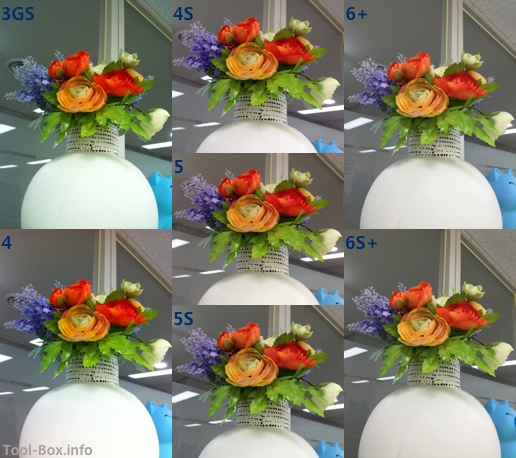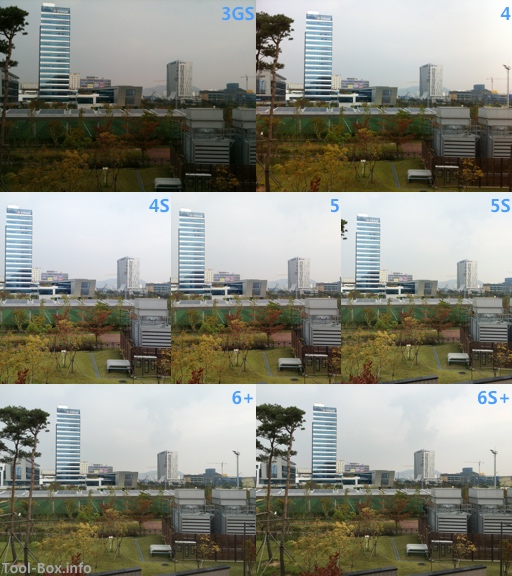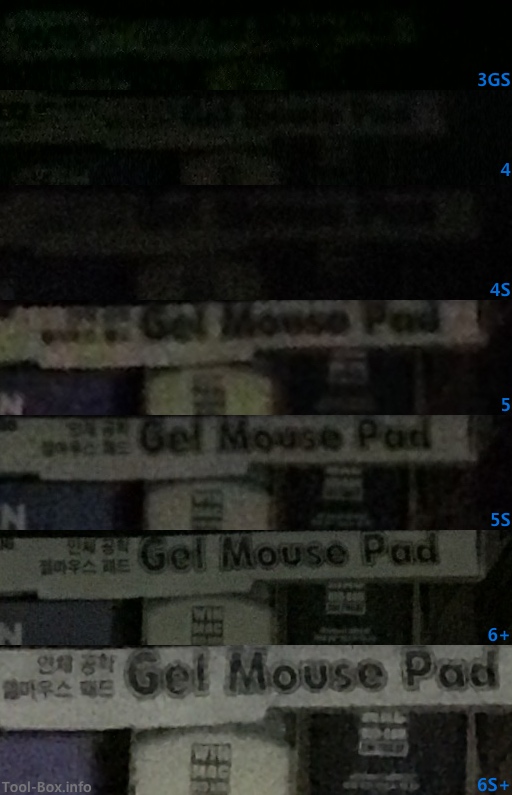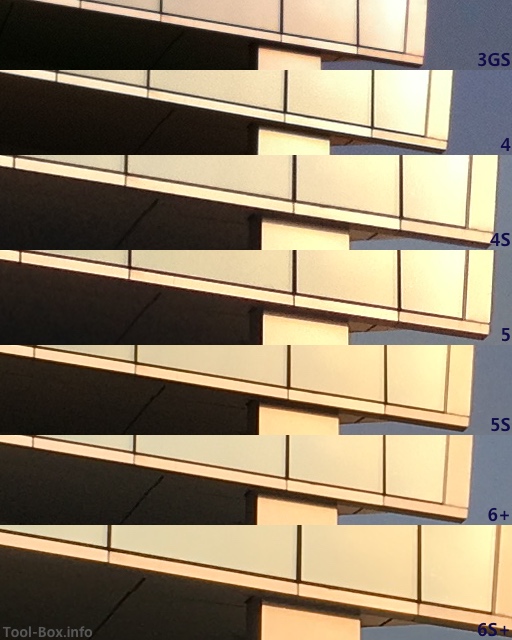Comparing 7 iPhones: Camera (Real-Life)
Posted by Wesley on
I take a lot of casual photos every day. I fill the storage space of a 128GB iPhone in a year just with photos. The habit goes way back before using iPhones. I used to have a digital camera tucked into a waist holster along with a GPS tracker so I can take geotagged photos all the time. Smartphones these days can do that automatically, but back when iPhones weren't around and "PDA phones" were niche curiosity this was so out of ordinary I was on a TV show for that.
So I'm rather grateful that the iPhones have made my habit easier to manage. But the high cost of the device (I buy the highest storage option, off contract) means that I'm sort of putting the digital camera purchase budget into it as well. In fact, I never bought an ordinary P&S camera after iPhone 3GS. I had effectively bet on Apple to improve the camera module every year so that investing in another camera was unnecessary. So did it pay off? I took the photos in the default camera app with no adjustments whatsoever to find out.

Well, it was initially a huge downgrade. I already had a compact 10-megapixel, 10x optical zoom camera before iPhone 3GS, so I carried both the 3GS and this camera around. The 3-megapixel module was doing alright, but only just so for quick snaps. It was only with iPhone 4 that I could wean off from a separate camera.
Let's look at the colour reproduction. The output from the 3GS camera looks quite alright by itself, but in reality the colours are exaggerated. It looks more colourful than it should be. This is evident when you compare with the results from the subsequent generations. Gradually, it gets toned down to get closer to being more natural. The low point is 6 Plus. 6S Plus picks up a little again.

With the landscape photos, 3GS falls rather short again. The automatic exposure setting comes out tad low, making the scene flat. Meanwhile, the introduction of the 8-megapixel sensor in the 4S set the basic standard of daytime photo quality that people have come to expect from iPhones. 6S Plus carried this tradition well to the 12-megapixel era.
In both of these well-lit photo examples, the 6 Plus and the 6S Plus are contending for the best quality, as expected. The 6S Plus doesn't feel like a clear winner, though. It seems to be trying to keep the 6 Plus quality intact while boosting the number of pixels. But what about going more extreme?
So I'm rather grateful that the iPhones have made my habit easier to manage. But the high cost of the device (I buy the highest storage option, off contract) means that I'm sort of putting the digital camera purchase budget into it as well. In fact, I never bought an ordinary P&S camera after iPhone 3GS. I had effectively bet on Apple to improve the camera module every year so that investing in another camera was unnecessary. So did it pay off? I took the photos in the default camera app with no adjustments whatsoever to find out.

Fake flower pot photographed with iPhones
| Original Photo | ISO | Shutter Speed |
|---|---|---|
| iPhone 6S+ | 25 | 1/30 |
| iPhone 6+ | 40 | 1/40 |
| iPhone 5S | 40 | 1/40 |
| iPhone 5 | 50 | 1/40 |
| iPhone 4S | 50 | 1/40 |
| iPhone 4 | 80 | 1/24 |
| iPhone 3GS | 64 | 1/20 |
Well, it was initially a huge downgrade. I already had a compact 10-megapixel, 10x optical zoom camera before iPhone 3GS, so I carried both the 3GS and this camera around. The 3-megapixel module was doing alright, but only just so for quick snaps. It was only with iPhone 4 that I could wean off from a separate camera.
Let's look at the colour reproduction. The output from the 3GS camera looks quite alright by itself, but in reality the colours are exaggerated. It looks more colourful than it should be. This is evident when you compare with the results from the subsequent generations. Gradually, it gets toned down to get closer to being more natural. The low point is 6 Plus. 6S Plus picks up a little again.

Landscape photographed with the iPhones
| Original Photo | ISO | Shutter Speed |
|---|---|---|
| iPhone 6S+ | 25 | 1/381 |
| iPhone 6+ | 32 | 1/449 |
| iPhone 5S | 32 | 1/540 |
| iPhone 5 | 50 | 1/376 |
| iPhone 4S | 50 | 1/365 |
| iPhone 4 | 80 | 1/355 |
| iPhone 3GS | 64 | 1/449 |
With the landscape photos, 3GS falls rather short again. The automatic exposure setting comes out tad low, making the scene flat. Meanwhile, the introduction of the 8-megapixel sensor in the 4S set the basic standard of daytime photo quality that people have come to expect from iPhones. 6S Plus carried this tradition well to the 12-megapixel era.
In both of these well-lit photo examples, the 6 Plus and the 6S Plus are contending for the best quality, as expected. The 6S Plus doesn't feel like a clear winner, though. It seems to be trying to keep the 6 Plus quality intact while boosting the number of pixels. But what about going more extreme?

Comparing the low-light sensitivity
| Original Photo | ISO | Shutter Speed |
|---|---|---|
| iPhone 6S+ | 1600 | 1/4 |
| iPhone 6+ | 500 | 1/4 |
| iPhone 5S | 2000 | 1/15 |
| iPhone 5 | 3200 | 1/15 |
| iPhone 4S | 800 | 1/15 |
| iPhone 4 | 1000 | 1/15 |
| iPhone 3GS | 1000 | 1/10 |
Shooting the photos in a dark room clearly shows when Apple started to care about low-light photos. The ISO setting couldn't go over 1000 up until the 4S, making it really hard to take photos when it's dark. If you turn up the brightness of your monitor, you'll see that it did capture a bit of something, but hardly more than that. iPhone 5 tried to remedy this problem by being able to boost the ISO level all the way to 3200. It sort of worked, but in the process a very muddy picture emerged.
Maybe Apple realized that ISO 3200 on a tiny sensor was a bad idea since then. I say this because this setting was never available in the subsequent models, limited to 2000 instead. With 5S, a brighter lens (f/2.2, from 2.4) and improved sensor brought out more details.
6 Plus took a step further by utilizing the optical image stabilization to allow for a slower shutter speed, down to 1/4 seconds instead of 1/15. Coupled with lowering the ISO from 2000 to 500 resulted in much sharper photo at the similar brightness. This was clever, but perhaps too clever. Annoyingly, the camera module refuses go beyond ISO 500 in the low light situations. ISO 2000 would be available only if sufficient light was present. Even on most 3rd party camera apps, the manual ISO setting would be ignored in favour of this self-imposed limit.
This situation was resolved with 6S Plus. This camera module has no problems deploying high ISO mode under low-light scenes. As a result, the photo came out even brighter, albeit at the loss of a bit of detail due to the ISO setting. I think it's a reasonable trade-off, and I'm glad to have the control back.

Comparing the dynamic range
| Original Photo | ISO | Shutter Speed |
|---|---|---|
| iPhone 6S+ | 25 | 1/1832 |
| iPhone 6+ | 32 | 1/2475 |
| iPhone 5S | 32 | 1/2740 |
| iPhone 5 | 50 | 1/2358 |
| iPhone 4S | 50 | 1/2045 |
| iPhone 4 | 80 | 1/1257 |
| iPhone 3GS | 64 | 1/1663 |
Last but not least, there's the dynamic range. If you're shooting a scene with a bright light source, low dynamic range of the sensors can result in a washed out bright area or a muddied dark area. To make up for this, HDR (High Dynamic Range) mode was introduced, combining multiple photos of differing exposure to bring out the details from both the bright and dark parts. But I wanted to see how the sensors coped on its own without the HDR mode on.
It seems that there had been a gradual improvement in this area, with 5S setting the standard for the recent generations. In the older models, details in the shadowy areas are hard to make out and the glass panes reflecting the Sun look more overexposed. With the sensors themselves being improved, it's no wonder that the HDR photos don't look dramatically better compared to the original in the recent years.
To summarize, camera performance had improved considerably over the years, much like the speed of the device. If you were to pick up on a used device, it seems the oldest discontinued model you want to go is perhaps around iPhone 5, both on the account of the camera and the processor/graphics performance. 5S is now selling as a low-end device, but it's still got a lot of oomph. And for those waiting for an upgrade to a 5S, 6S series is definitely the way to go.
For the 6 series users, though, the 6S series is bit of an on-the-fence thing. Other than increasing the pixel count, the quality of the photos themselves aren't that considerably better. Apple did do a great job of not degrading the quality due to having more pixels packed into the small sensor area, of course. But if you're happy with the 8-megapixel outputs from the 6 and 6 Plus, I don't blame you for holding back.
Defined tags for this entry: camera, iPhone 3GS, iPhone 4, iPhone 4S, iPhone 5, iPhone 5S, iPhone 6 Plus, iPhone 6S Plus